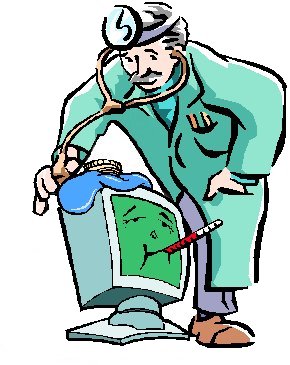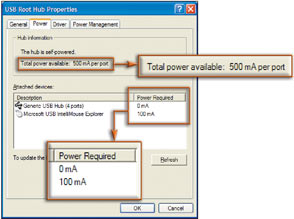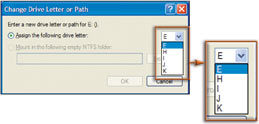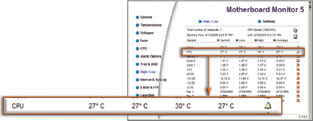10 tips to help your computer work efficiently
 Have you ever thought that with a few simple steps, you can make sure your computer is always working effectively and thereby save a lot of time instead of having to troubleshoot or fix the problem? Unfortunate failure. The article will introduce some effective methods to achieve this goal.
Have you ever thought that with a few simple steps, you can make sure your computer is always working effectively and thereby save a lot of time instead of having to troubleshoot or fix the problem? Unfortunate failure. The article will introduce some effective methods to achieve this goal.
Implementing system backups: I know there are some readers who are too 'diligent' in performing their backups of their systems, applications, and data even though that is not really necessary.In fact, no backup strategy is 100% effective and most take a lot of time to install or use them.
A quick and effective way to perform system backup is to create an 'image' for the hard disk when the system is in good working condition.In this way, when a problem occurs, you only need to restore the system from the previously created disk image and the execution time usually does not exceed 45 minutes.After that, you will have a new, more reliable system, no spyware or conflicts (hardware) between hardware devices . except for all files, programs and information. The installation number that you changed after making this disk image.
 Figure 1: Make Outlook Express easier to recover by resetting the Store Folder folder.
Figure 1: Make Outlook Express easier to recover by resetting the Store Folder folder.
Utilities like Symantec Norton Ghost 9 (www.symantec.com/sabu/ghost/ghost_personal/) and Acronis True Image 8 (www.acronis.com/) will restore Windows XP operating system, office suite Microsoft Office as well as other applications and utilities in just a half of the time if you have to reinstall all programs, manually update the data file as well as rearrange the system settings at your own discretion.
 Figure 2: Accelerate backup process with removable hard drive tray like Addonics's Satura Mobile Rack 1.
Figure 2: Accelerate backup process with removable hard drive tray like Addonics's Satura Mobile Rack 1.
The downside of this method is that the prices of tools that perform system backups are quite high, such as Norton Ghost which sells for $ 70 and True Image for $ 50.But anyway, saving this disk image on another hard disk is more convenient than copying all that data onto a DVD, even more costly.Specifically, a hard disk costs between 100 and 150 USD (depending on capacity and speed), or from 150 to 250 USD if an external hard disk.If you choose to save the image of the hard disk on DVD, you need to make sure that the backup program you are using must support the type of data you create as well as the type of DVD player because of incompatibility between DVD drives. and backup software often occurs.
If you have a current sense of saving and hard disk still have plenty of free space, you may not need to buy a second hard disk.You can then save the disk image file to another part of the current hard disk.Of course, if this hard disk crashes like a failure, you will lose this image file.To create a second partition for your hard drive, you can use Windows XP or another program such as Symantec's Partition Magic ($ 70, www.symantec.com/partitionmagic/) for example.
In order for data to be easily recovered, save your data files in a different partition than the one that is installing Windows and other applications.For example, in Outlook Express, click Tools.Options.Maintemance.Store Folder and select a folder to save your email (Figure 1).Word, Excel and other applications also have the same option to change the default directory to store data.
 Figure 3: Review the power requirements on the USB bus.
Figure 3: Review the power requirements on the USB bus.
Adding disk mobility: You can recover disk image files quickly in seconds using two interchangeable hard disks: one is the system's main drive, the other is the data drive. save.This method requires you to equip a mobile hard drive tray like Saturn Mobile Rock I of Addonies for $ 40, for example (Figure 2).
Put this tray into an empty disk bay on the front of your PC.Maintain the second hard disk (containing the disk image file of the first hard disk) in a ready-to-operate position.And all you need to do when something goes wrong is just turn off the computer, swap the two hard disks and reboot the system.
Avoid USB power crisis: Digital cameras, mobile phones, mice, keyboards and other peripherals will vie to 'devour' the limited power of USB ports in the PC.If a power supply request overloads a USB port, the bus can be completely closed as well as an insufficient capacity USB port may cause problems with the device attached.The Windows Device Manager tool allows you to check the power requirements on USB ports.In Windows XP and 2000, right-click the My Computer icon and select Properties.Hardware.Device Manager, with Windows 98 / Me, right-click My Computer and select Properties.Device Manager.
In the Device Manager window, double-click Universal Serial Bus controller and then the first USB Root Hub list.Then, select the Power tab (Power properties button in Windows 98 / Me), you will see a list of devices connected via this USB hub along with the power requirements of each device in milliampe units below the item. 'Attached devices' or 'Device on this Hub' in Windows 98 / Me / 2000 (Figure 3).
 Figure 4: Assign a drive letter to the Disk Management device of Windows.
Figure 4: Assign a drive letter to the Disk Management device of Windows.
In fact, a normal root hub can provide up to 500 milliampes so if your root hub is overloaded or approximates maximum 500 mA, move some of the devices connected to it to another root hub. , or equipped with a self-powered USB hub.
Fixed drive name: The drive letter (character) is automatically assigned by Windows to removable hard disks, digital cameras, memory cards, and other external storage devices will often change change.Therefore, if there is an application that finds data on a drive with a specific letter name, it may not be found.
To fix a drive letter in Windows XP and 2000, right-click the My Computer icon and select Manager.Disk Management.In the bottom right pane, right-click on the bar that represents the drive with the text you want to set and select Change Drive Letter and Paths.Change (or Edit with Win2000).Then, select a letter name from the menu, then click OK and Yes to finish (Figure 4).
 Figure 5: Monitor the temperature inside the computer using the Motherboard Monitor utility
Figure 5: Monitor the temperature inside the computer using the Motherboard Monitor utility
In Windows 98 / Me, right-click the My Computer icon and select Properties.Device Manager, then double-click the device name (if the device doesn't have this information, you're out of luck).Select Settings in the section labeled 'Reserved drive letters', then select a character from 'Start drive letter' and another time with that letter at 'End drive letter'.From here on, this device will be assigned the name you selected.
Cooling for PCs: Overheating computers can cause malfunction or damage CPUs and other electronic circuits.Some new motherboards are equipped with a temperature-controlled circuit breaker in the BIOS.This circuit breaker automatically disconnects the computer when the internal temperature exceeds a certain threshold value.You can enable this feature in your PC Setup program by pressing and holding the appropriate key (usually the F1 or Delete key) while the computer boots, then find a temperature reference below the section labeled 'Power' or an equivalent word.Alternatively, you can use the free Motherboard Monitor utility (available for download from www.pcworld.com.vn, ID: 47642) that allows you to check the system temperature from the Windows screen (Figure 5).
Removing a secure external device: If while Windows is recording / writing data on a USB memory stick or some external storage device that you unplug this device from the computer, the data may be lost.In Windows XP / 2000 / Me, double-click the Safety Remove Hardware icon in the system tray (Figure 6) when you are ready to remove the device from the computer, select the device name in the list listed and press Stop button then go to OK.Soon, a message will appear indicating that you can safely remove the device from the computer.
Upgrade must be cautious: Surprisingly, there are many products that come with device drivers (drivers) that have not been carefully tested, and they can cause a lot of problems for the system. . So try to minimize the possibility of a dispute by removing the old device's drivers before installing a new device. You can find detailed information about hardware devices from the Device Manager utility. With Windows XP or Windows 2000, right-click the device to remove and select Uninstall. In Windows 98 / Me, click on the device name and select Remove.
Also, remember to always finish installing a new driver and then, if necessary, uninstall it and start over.Interrupting the installation process may alter the contents of the files and you will not be able to successfully reinstall the device.
 Figure 6: Removing safety equipment with Safety Remove Hardware.
Figure 6: Removing safety equipment with Safety Remove Hardware.
Monitor the health of hard drives: After a period of use, some sectors on your hard disk may lose data storage capabilities.Run a disk diagnostic program once a month to mark these bad sectors, isolate them so that the system does not use these sectors and transfer all the data at risk to another place. Fuller.To perform disk checking from Windows XP / 2000, in the Windows Explorer utility window or in any folder window, right-click the icon of the hard disk to check and select Properties.Tools.Check now.With Windows 98 / Me, click Start, Programs, Accessories, System Tools, Scan, select the drive you want to perform the test and click Start.The results will indicate if your hard disk has any damaged sectors.In addition, for additional instructions on automating this job and other disk maintenance tasks, you can refer to the article 'Setting Up System Maintenance periodically' also in this month's issue.
In addition, Panterasoft's free HDD Health program (www.pcworld.com.vn, ID: 47833) will regularly monitor your hard disk for signs of malfunction. Most computer manufacturers have a diagnostic program used to check all of their hardware components. If your computer is not equipped with this program, you can download the Sandra Lite utility (30 USD, free trial version is available at www.find.pcworld.com/47836) or # 1-Tufftest Lite # 1 – PC Diagnosties (10 USD, www.find.pcworld.com/47838).
Manage your installation disc carefully: Keep important software CDs as well as device installers in a safe place, such as a CD case. You should also write down any installation keys or software registration numbers on a separate CD, so you can easily refer to these settings in the following installments.
Keep your computer clean: Cleaning your computer is a must, even if you never receive a notification asking for it. Also, check the ventilation slots on the cabinet more often to see if there are lots of dirt and obstructions, and if so, wipe them off with a damp tissue. Blocked ventilation slots will cause overheating inside the case, which is the cause of all problems. The more clean, the less damage the system will have and the longer the service life. For more details on how to clean and clean, refer to the article 'PC Maintenance Process' (ID: A0408_120) or another guide at find.pcworld.com / 47978.
Bui Xuan Toai
PC World America 8/2005
 'Denial of Service' Attack: Web site obsession
'Denial of Service' Attack: Web site obsession Internet's 'Father' and the interplanetary protocol
Internet's 'Father' and the interplanetary protocol Your computer: Polish PC
Your computer: Polish PC Operating system: Replace Windows?
Operating system: Replace Windows? 'Life up' for laptops
'Life up' for laptops Take care of the laptop screen
Take care of the laptop screen